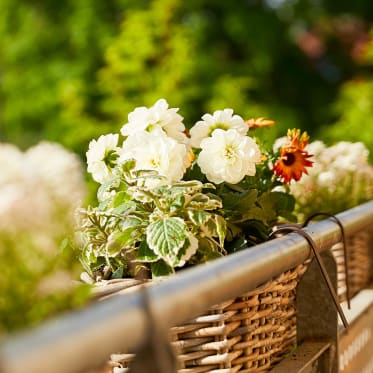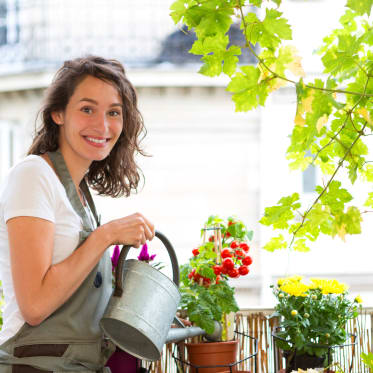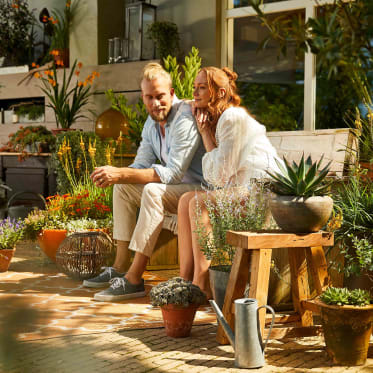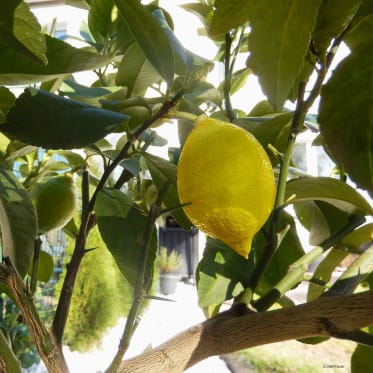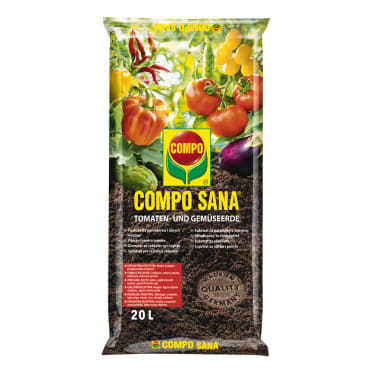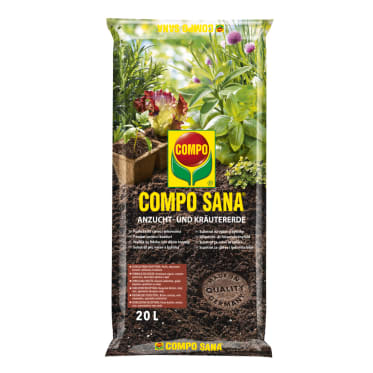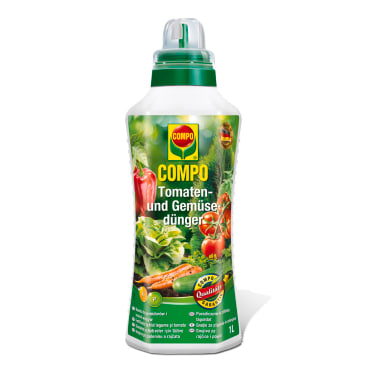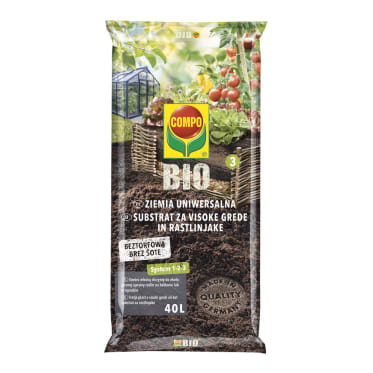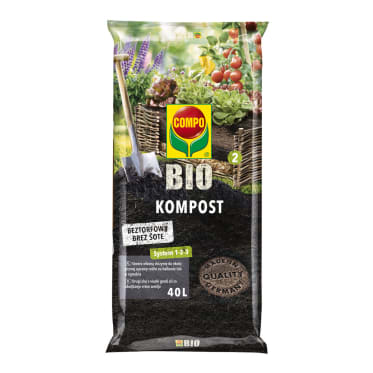Frequent search terms
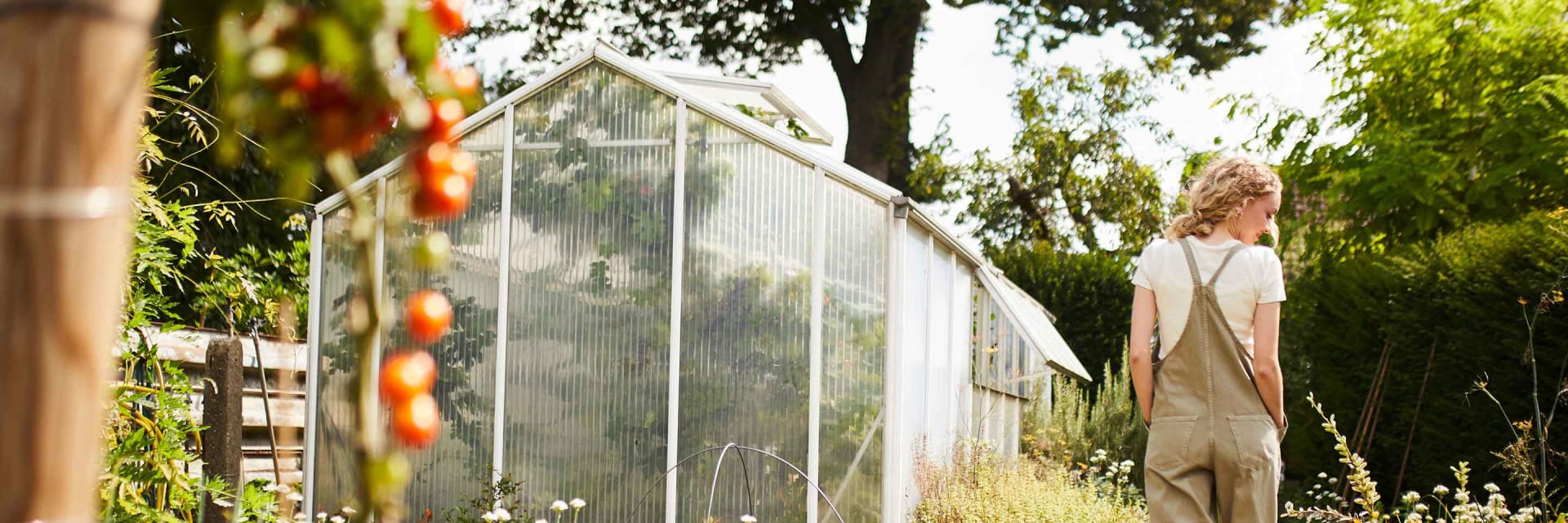
- COMPO
- Guide
- Plant Care
- Garden
- Greenhouse
- Buying and setting up a greenhouse
Things you should look out for when buying and setting up a greenhouse
A roof over the head of your plants
Would you like to garden all year round – even when it’s raining, snowing or stormy outside? You’re self-sufficient and can’t start sowing your seeds soon enough? Or are you looking for the best possible spot for the winter home of your exotic plants? If you still have some space available in your garden, then a greenhouse could be just the thing for you. We explain the best way to proceed when planning, buying and setting one up.
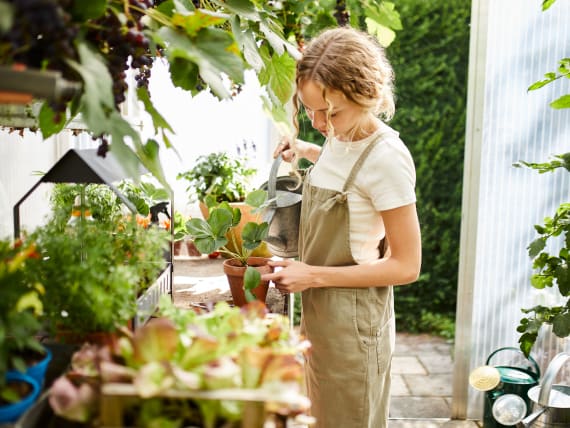
Whatever your reason for opting for a greenhouse, the benefits of gardening under glass are manifold. Greenhouse owners can usually look forward to better growth, bigger yields and fewer slug and pest infestations. This is because of the so-called greenhouse effect, i.e. the transparent surfaces allow an especially large amount of sunlight to enter the greenhouse. The plants and soil inside absorb energy from the light, convert it into heat, release it into the environment and the greenhouse heats up. Since the air in a greenhouse doesn’t escape, heat builds up and provides the ideal conditions for plant growth in the process.
Step by step guide to your perfect greenhouse.
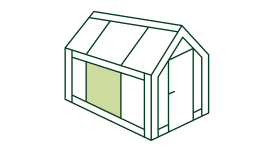
1
The pros and cons of using glass, plastic or sheeting
Depending on your needs, space and budget, you can opt for either a lean-to greenhouse attached to the wall of a building or a freestanding greenhouse. The lean-to greenhouse has the advantage that it is usually cheaper to buy and stores the heat of the building wall as well. Greenhouses are made of glass, plastic or sheeting. Glass greenhouses usually have a solid frame and are extremely stable. They look best, too, but are also easily damaged. We recommend greenhouses made of structural glass, as this material diffuses the light so that plant burns are avoidable. Plastic greenhouses are usually made of acrylic glass, which is much less likely to shatter or suffer scratches, as well as easier to assemble and clean than real glass. Covers made of sheeting are the most inexpensive and mobile option but also offer the least protection against the wind and cold. Although the material is easy to clean, it also becomes porous quickly. Covers made of sheeting are especially ideal for hobby gardeners who start sowing earlier and don’t want to invest a lot of money.
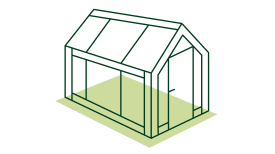
2
A stable foundation
To ensure the greenhouse remains stable in all weather, you should erect it on a foundation. Another advantage of a foundation is that less heat is released into the ground. Ready-to-buy greenhouses often come with a metal or wooden frame that serves as a base. Depending on how large and heavy the greenhouse will be, a more stable concrete foundation may also be necessary in the form of a bottom slab, strip foundation or point foundation, for example. To protect the greenhouse from frost, the foundation’s depth should ideally be 60-80 cm. Since accuracy and certain manual skills are required for the construction of a concrete foundation in particular, you should carefully consider beforehand whether you want to do this work yourself or have it done professionally.
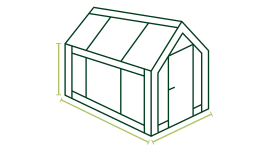
3
Size of the greenhouse
Of course, the size of your greenhouse depends on what you plan to use this indoor garden for and how much space you have available. If you only want to grow a few vegetables, then you’ll be fine with a small one of no more than 10 m². Having said that, many keen greenhouse owners quickly get a taste for this particular form of gardening and the greenhouse starts to burst at the seams before very long. That’s why it’s advisable to think carefully about what you want to use the greenhouse for and create a planting plan before buying or erecting one. What plants would you like to grow in your greenhouse? Should it be used for winter storage, too? If conditions are too tight, growth will be impaired and fungal diseases or pest infestations are more likely. Working in a greenhouse with various equipment also requires a certain amount of elbowroom, so the floor space should be at least 12 m² and the height about 2.5 m to allow the plants to get enough oxygen.
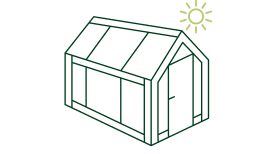
4
The perfect spot for a greenhouse
For plants to thrive perfectly in a greenhouse, they need a lot of light. A sunny spot protected from the wind is ideal for a greenhouse. Make sure that there are no tall trees, hedges, or walls in close proximity that could cast shadows or damage the greenhouse during a storm. It is advisable to align the greenhouse with the ridge facing east-west. Ideally, lean-to greenhouses should face south. Please bear in mind that under certain conditions a building permit may be required for the erection of a greenhouse in some regions. Accordingly, obtain information on the local requirements beforehand.

5
How to set up your greenhouse properly
The interior of your greenhouse also depends heavily on what you want to put in it, of course. It’s advisable to create a planting plan first so as to make the most of the space in the greenhouse. Hanging shelves and plant or growing tables made of metal are extremely stable and offer sufficient storage space for seed trays, pots and accessories, etc. If you plan to grow vegetables all year round or overwinter tropical plants in your greenhouse, then it also makes sense to have an electric or gas heater that distributes the heat evenly for the cold months. These are also known as frost protectors and only start to heat up at a certain temperature to keep energy consumption and the associated costs low. Alternatively, you can use bubble wrap for additional insulation in glass greenhouses without heating. Ultimately, the opportunities for developing your green fingers under glass are endless. As with so many things, good planning is half the battle when erecting and using a greenhouse. And no one masters gardening without hard work.
Other exciting topics
Products for use in a greenhouse






